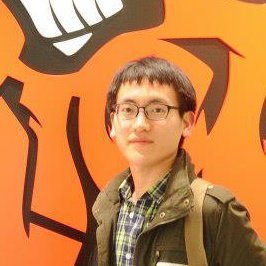Include is a club originally from Information and Communications University (ICU) that joined KAIST with the academy in 2009, which originally resembled System Programmers’ Association for Researching Computer Systems (SPARCS) but chose to focus on creating phone applications (apps) for the Android, iOS, and other platforms. Starting with the app Bab (Korean translation of “rice”), which gave students easy access to information on meal menus around campus, Include has created apps pertaining directly to the KAIST undergraduate lifestyle. The KAIST Herald interviewed the current president in their making.

Hello, could you first introduce yourself and the applications Include has made?
Hi, I am Donghan Jang from the Department of Computer Science and the tenth president of Include. This semester we published Bab, Board, and KLMS for the android phones; Board is an app that allows the phone to access the KAIST Portal with greater comfort, and KLMS does that for the KAIST Learning Management System (KLMS) site.
Why did Include create apps directly related to the student lives?
Before Bab, club members always had to ask each other whether the menu was better elsewhere or if the place has closed yet, which was quite a hassle. This became the inception for the app. Also, Include’s contribution to the students’ lifestyle seemed to have dwindled, so we decided that we should create more apps related to the KAIST undergraduate lifestyle. In case of Board and KLMS apps, we aimed to make accessing the services more user-friendly, since doing it on the phone’s web browser service proved more than often slow and glitchy.
Bab must be getting the information from KAIST. Is Include in cooperation with the college?
We do not work directly with or receive help from the college. Our apps primarily serve as mediators in making the services more accessible. When we need to outsource, we utilize open information supplied by KAIST - for example, the monthly meal schedule or the identification (ID) and password service for Portal. However, cooperation is welcome, as it would allow for greater services. During the course registration season, we always see people rushing to school laptops in competition, but with KAIST’s help, maybe we could make the processes available on the phone as well.
Does Include plan on creating more student oriented apps?
Well, I think the most important ones are dealt with, and now that the apps are in publication, we are searching for service ideas that would aid the students that are yet unaddressed and unexpected. In the meantime, we are looking into creating a KAIST bus schedule app. There already is one created by graduate students, but the updates are relatively slow; we hope to make relevant improvements for practical use. Also, suggestions from those not from Include are greatly welcome. We do not always know what is necessary, and for us not to go around running in circles, such guiding words are helpful.
How does the app creation process usually go?
It chiefly depends on app size. In case of Bap, there were four central figures in the process. Since we do not have a designated producer, there are three to four people on the job. After primary consultation, the designer finishes the blueprint and developers start coding. So, at least two people are necessary, a producer and a designer. Design is crucial issue in app creation, especially in smartphones where the screen size and input methods are highly limited. That is why despite being an information technology (IT) club, we are always on the lookout for designers.
Do you have any advisory words for those who wish to participate in app creation?
Come to Include. Since studying at KAIST can get burdensome, most are discouraged from joining. To overcome this stage, I think one needs a clear motivation. Clear goals such as “I need this, I need to make the app” helps create focus in learning app creation. You need to follow small examples from introductory texts, and after practicing the process, it will become possible to partake in larger, fancier programs.
Thank you for the interview. Do you have any last comments?
If there is an app you think is necessary, tell us. Our e-mail is always open, and with your help, we will be able to create better, more useful apps.

